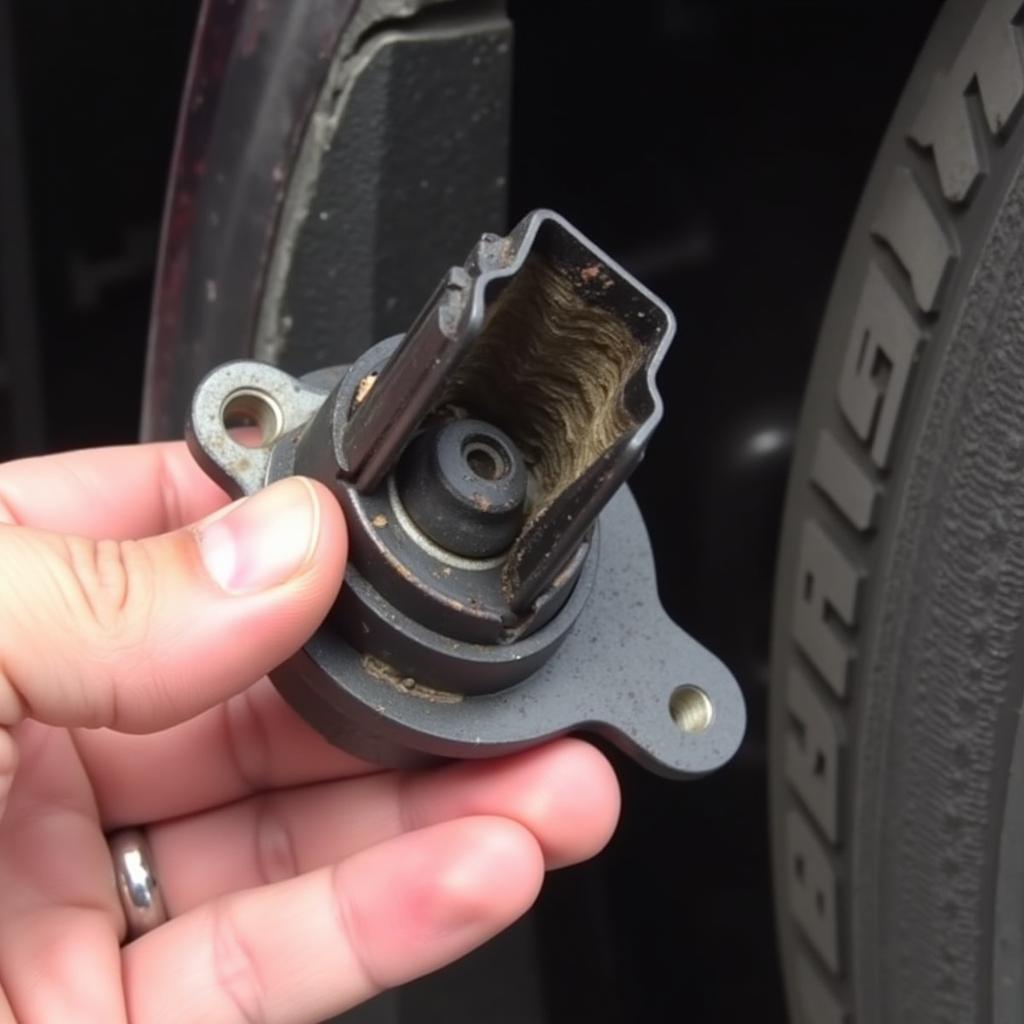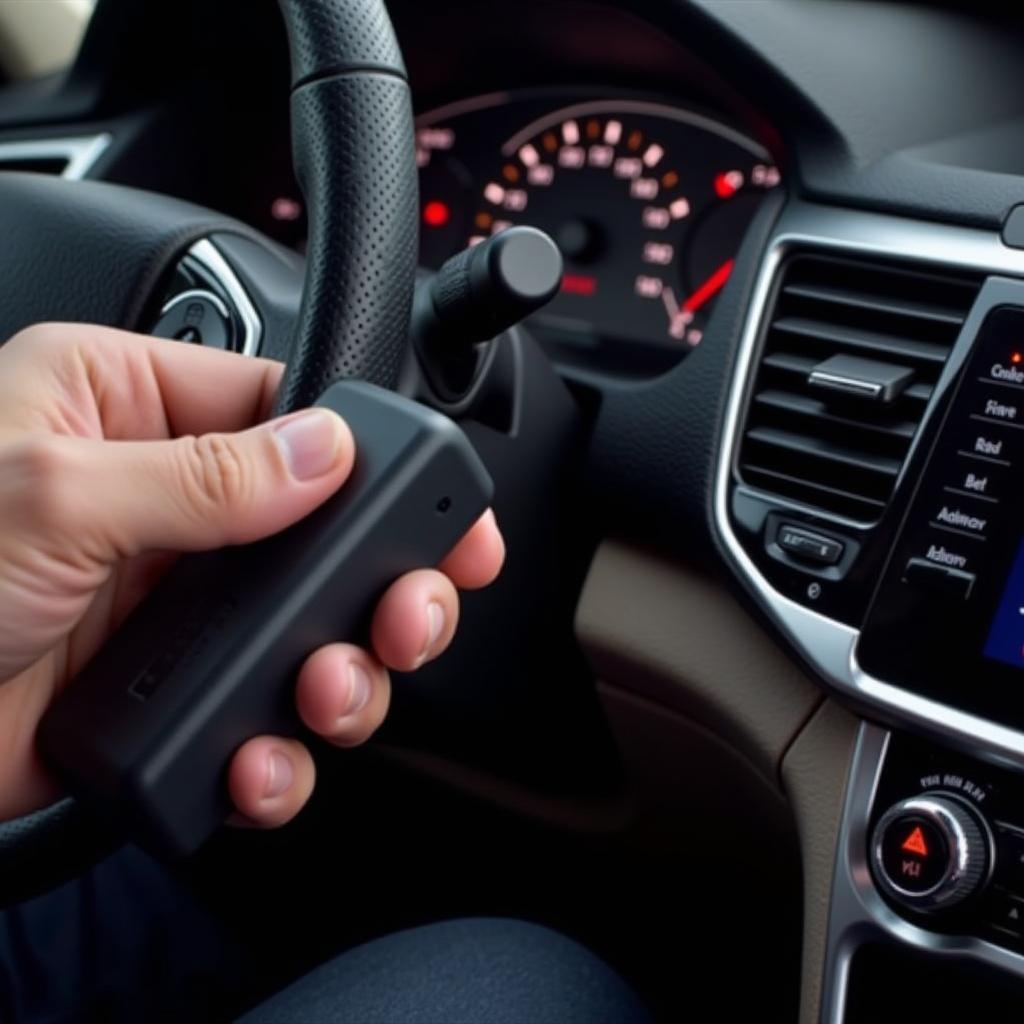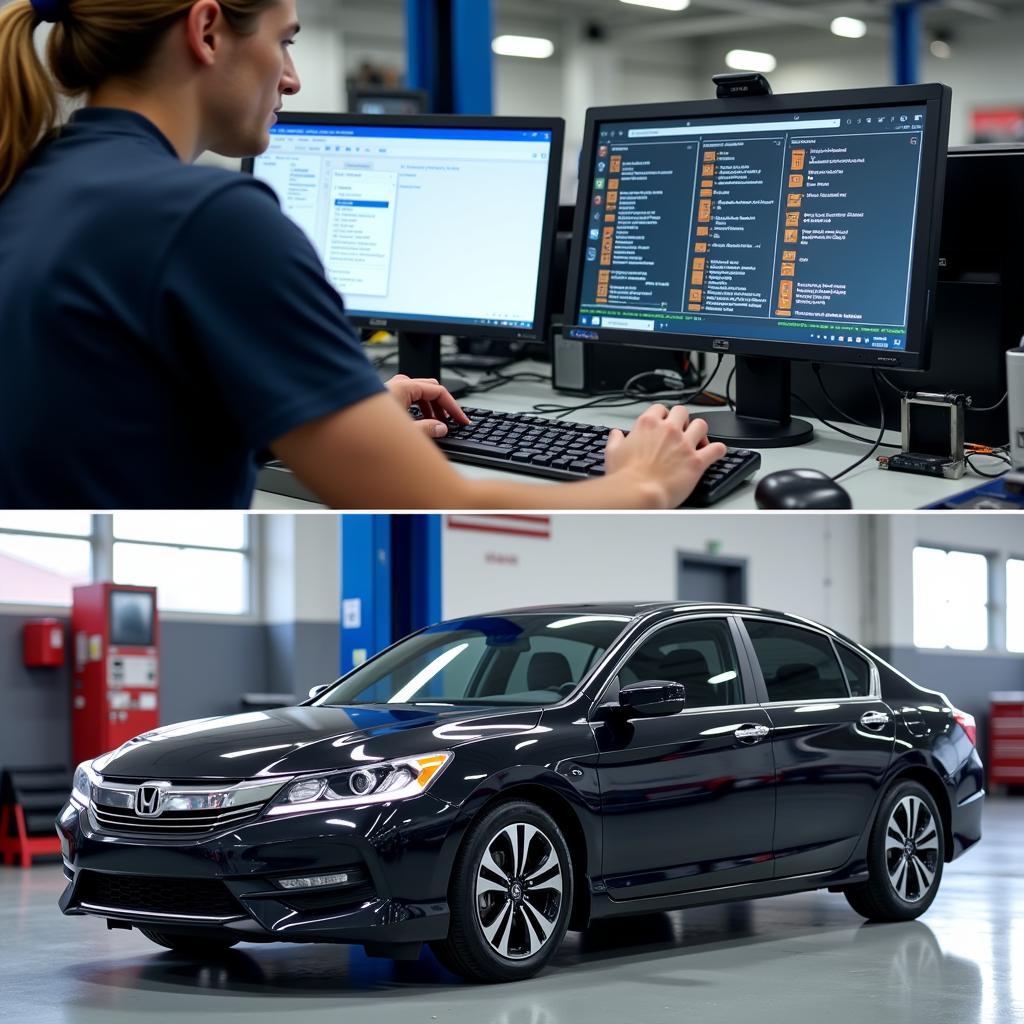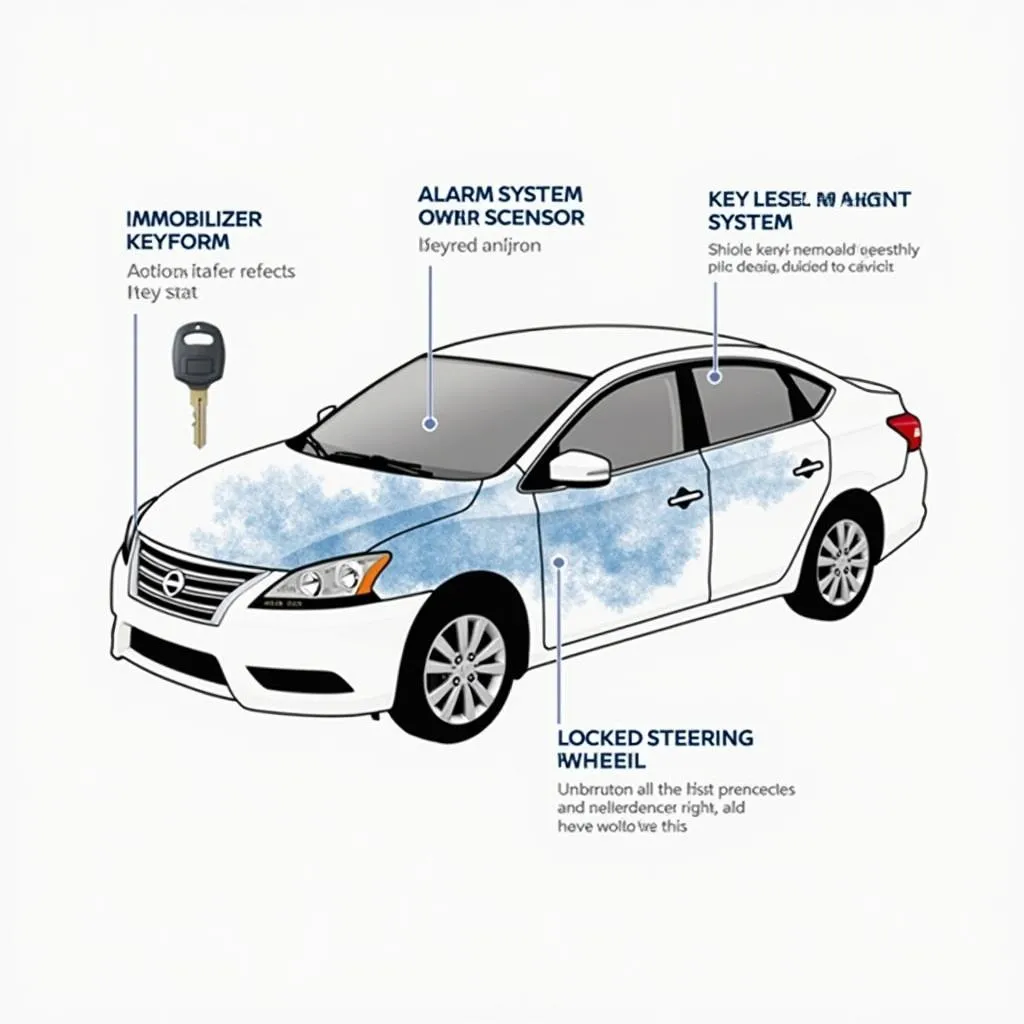If your 2017 Honda Accord’s dashboard is lit up like a Christmas tree with the ABS, brake, traction control, and steering warning lights all on, don’t panic. This is a common issue, and while concerning, it’s usually not a sign of a catastrophic failure. This guide will help you understand what might be going on and how to get back on the road safely.
What these warning lights mean:
- ABS (Anti-lock Braking System) light: This light indicates an issue with the system that prevents your wheels from locking up during hard braking.
- Brake System light: This light typically signals a problem with your traditional braking system, such as low brake fluid or worn brake pads. However, it can also illuminate alongside other warning lights.
- Traction Control light: This light indicates a problem with the system that helps maintain grip on slippery surfaces.
- Steering wheel light (Electric Power Steering or EPS): This light means there’s an issue with your car’s power steering system.
Common Causes:
While these lights illuminating simultaneously might seem daunting, a few common culprits are often at play:
-
Faulty Wheel Speed Sensor: Your car uses wheel speed sensors to monitor each wheel’s rotational speed. This information is crucial for the ABS, traction control, and stability control systems. A malfunctioning sensor can disrupt these systems, triggering multiple warning lights.
-
Low Battery Voltage: Your car’s electrical system powers all those safety features. A weak battery or charging system problem can cause erratic behavior in these systems.
-
Steering Angle Sensor Issues: This sensor relays information about your steering wheel’s position to the EPS and other systems. If it malfunctions, it can cause multiple warning lights to illuminate.
-
Wiring Harness Problems: The wiring harness connects various components of your car’s electronic systems. Exposure to the elements, rodent damage, or simple wear and tear can cause shorts or open circuits, leading to communication errors between systems.
 2017 Honda Accord faulty wheel speed sensor
2017 Honda Accord faulty wheel speed sensor
Troubleshooting Steps:
Before rushing to the mechanic, here are some initial steps you can take:
- Check your battery and charging system. A simple voltage test can tell you if your battery is weak.
- Inspect your brake fluid level. Low brake fluid can trigger the brake system light and potentially cause issues with the ABS system.
- Check your tires. Make sure your tires are properly inflated and that there is no visible damage to the sidewalls.
When to Seek Professional Help
If the warning lights persist after these initial checks, it’s time to consult a professional.
 Mechanic using a diagnostic scanner on a 2017 Honda Accord
Mechanic using a diagnostic scanner on a 2017 Honda Accord
A qualified mechanic with access to a professional-grade diagnostic scanner can pinpoint the root cause of the issue by reading the fault codes stored in your car’s computer. They can then advise you on the necessary repairs.
Remote Diagnostics and Programming Options
In some cases, the issue might be resolved remotely. Many modern vehicles, including some 2017 Honda Accord models, have telematics systems that allow for remote diagnostics. This means a technician can potentially diagnose and even resolve software-related problems without needing physical access to your car.
 Remote diagnostics and software update on a 2017 Honda Accord
Remote diagnostics and software update on a 2017 Honda Accord
Don’t Ignore the Warning Lights
Ignoring these warning lights can compromise your safety and potentially lead to more severe and costly repairs down the road.
Conclusion
Experiencing multiple warning lights on your 2017 Honda Accord can be alarming. However, understanding the potential causes and taking the appropriate steps can help you address the issue swiftly and safely. Remember, proactive maintenance and timely professional help are essential for keeping your Honda Accord running smoothly and safely for years to come.

